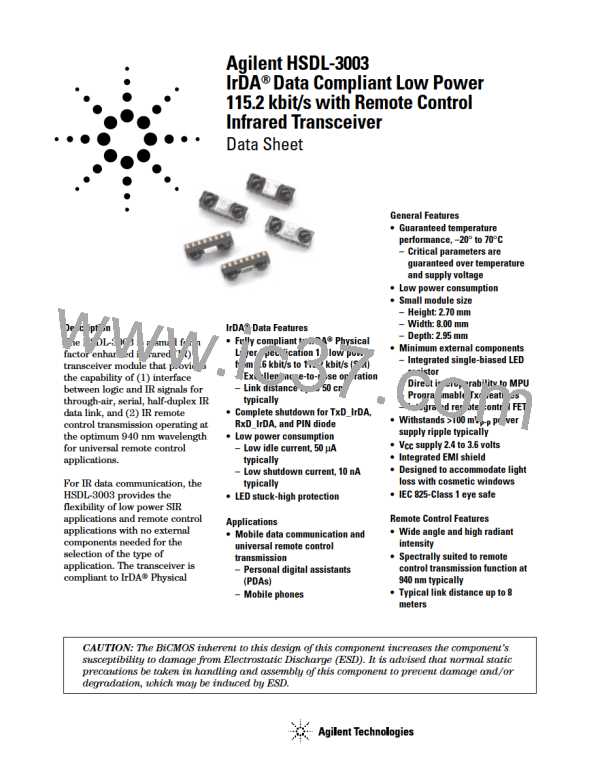Aperture height (Y) vs. module depth.
Aperture width (X) vs. module depth.
18
16
14
12
10
8
10
9
8
7
6
5
4
6
3
4
2
1
0
X MIN.
Y MIN.
2
0
0
1
2
3
4
5
6
0
1
2
3
4
5
6
MODULE DEPTH (Z) – mm
MODULE DEPTH (Z) – mm
For module depth values that are
not shown on the table above, the
minimum X and Y values can be
interpolated. An example of this
interpolation for module depth of
0.8 mm is as follows:
0.8 – 0.5
X
=
=
x (11.75 – 11.45) + 11.45 = 11.63
x (4.45 – 4.20) + 4.20 = 4.35
min
1.0 – 0.5
0.8 – 0.5
1.0 – 0.5
Y
min
Window Material
Almost any plastic material will
work as a window material.
should be 10% or less for best
optical performance. Light loss
should be measured at 875 nm.
Polycarbonate is recommended.
The surface finish of the plastic
should be smooth, without any
texture. An IR filter dye may be
used in the window to make it
look black to the eye, but the
total optical loss of the window
The recommended plastic
materials for use as a cosmetic
window are available from
General Electric Plastics.
Recommended Plastic Materials:
Material #
Lexan 141
Lexan 920A
Lexan 940A
Light Transmission
Haze
1%
Refractive Index
1.586
88%
85%
85%
1%
1.586
1%
1.586
Note: 920A and 940A are more flame retardant than 141.
Recommended Dye: Violet #21051 (IR transmissant above 625 nm)
19

 AGILENT [ AGILENT TECHNOLOGIES, LTD. ]
AGILENT [ AGILENT TECHNOLOGIES, LTD. ]